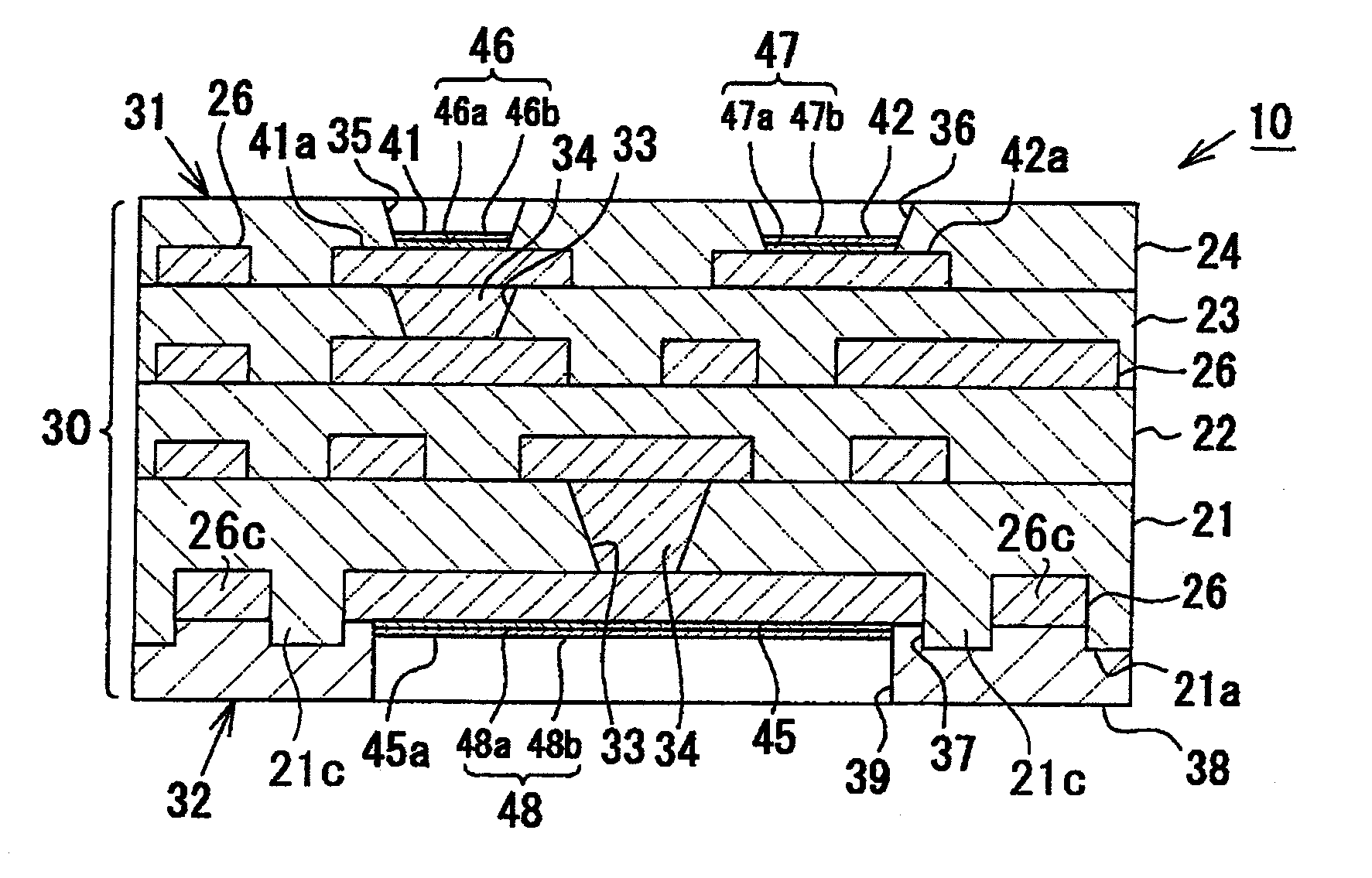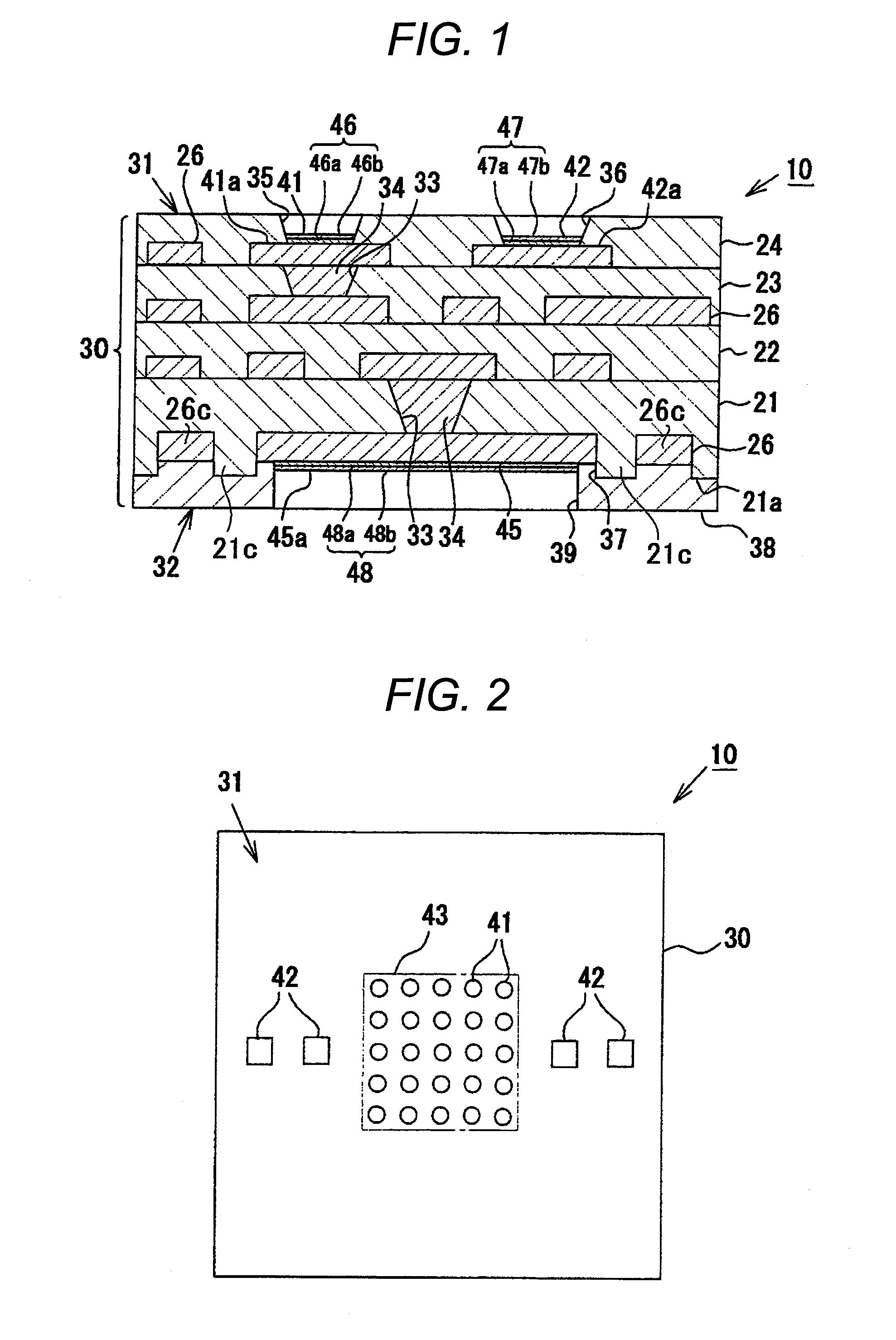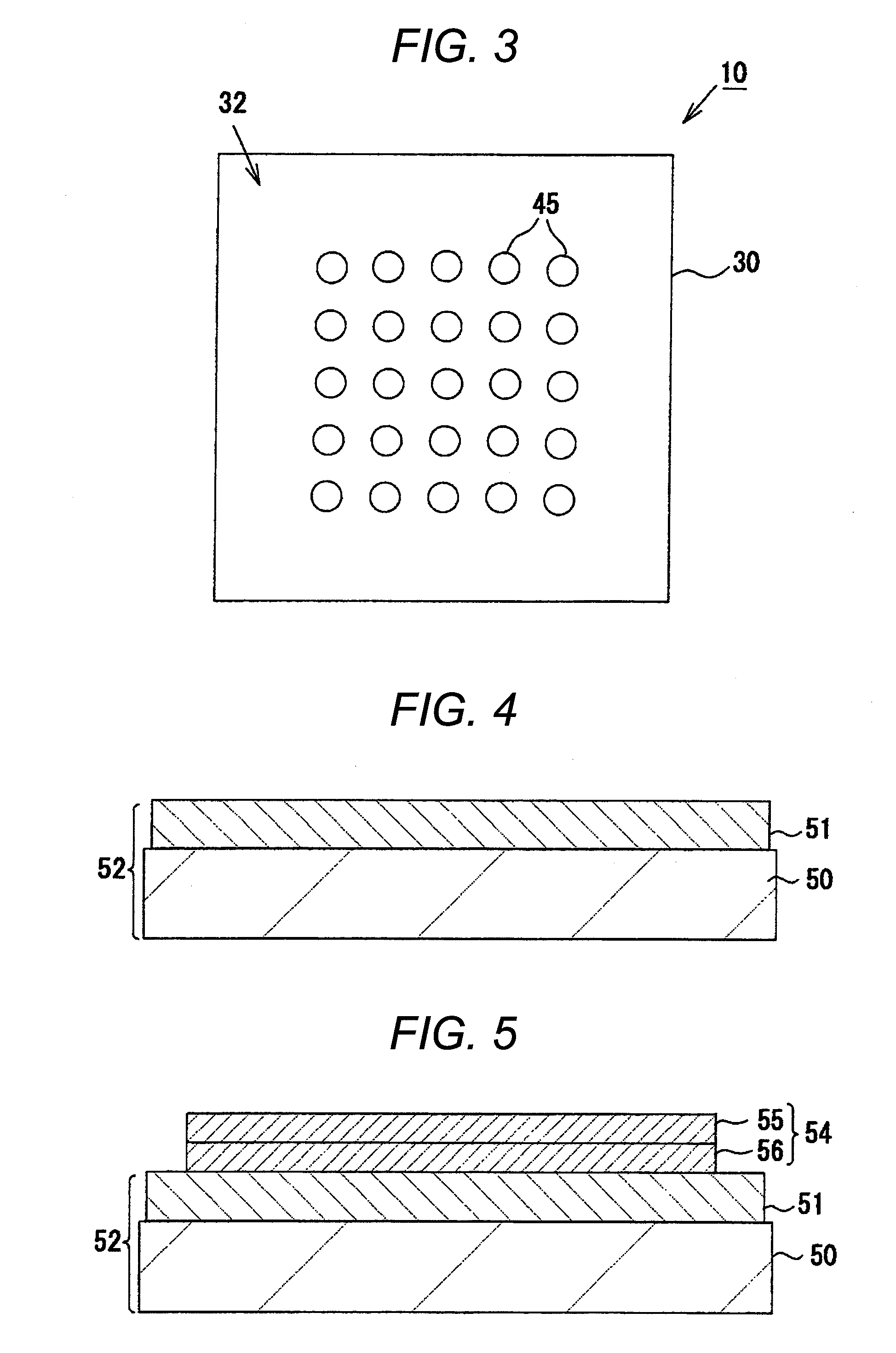Multilayered Wiring Board and Method of Manufacturing the Same
a multi-layer wiring and wiring board technology, applied in the direction of printed circuit manufacturing, printed circuit aspects, electrical apparatus construction details, etc., can solve the problems of reducing reliability, difficult to obtain wiring boards, and difficult to obtain insulation properties between wiring lines b>101, so as to increase the adherence area of solder resists, increase the strength of multi-layer wiring boards, and increase the adherence strength of connecting terminals
- Summary
- Abstract
- Description
- Claims
- Application Information
AI Technical Summary
Benefits of technology
Problems solved by technology
Method used
Image
Examples
Embodiment Construction
[0046]Hereinafter, a multilayered wiring board according to an embodiment of the present invention will be described in detail with reference to the accompanying drawings. FIG. 1 is an enlarged cross-sectional view illustrating a schematic configuration of the multilayered wiring board according to the present embodiment. In addition, FIG. 2 is a plan view illustrating the multilayered wiring board viewed from the upper surface side, and FIG. 3 is a plan view illustrating the multilayered wiring board viewed from the bottom surface side.
[0047]Referring to FIG. 1, the multilayered wiring board 10 is a coreless wiring board which does not have the core board but has a wiring stack portion30 (stack structure) multilayered by alternately stacking four resin insulation layers 21, 22, 23 and 24 including a same resin insulation material as a main component and a conductor layer 26 made of copper. Each resin insulation layer 21 to 24 is formed using a build-up material including a resin in...
PUM
| Property | Measurement | Unit |
|---|---|---|
| diameters | aaaaa | aaaaa |
| circumference | aaaaa | aaaaa |
| diameter | aaaaa | aaaaa |
Abstract
Description
Claims
Application Information
 Login to View More
Login to View More - R&D
- Intellectual Property
- Life Sciences
- Materials
- Tech Scout
- Unparalleled Data Quality
- Higher Quality Content
- 60% Fewer Hallucinations
Browse by: Latest US Patents, China's latest patents, Technical Efficacy Thesaurus, Application Domain, Technology Topic, Popular Technical Reports.
© 2025 PatSnap. All rights reserved.Legal|Privacy policy|Modern Slavery Act Transparency Statement|Sitemap|About US| Contact US: help@patsnap.com



